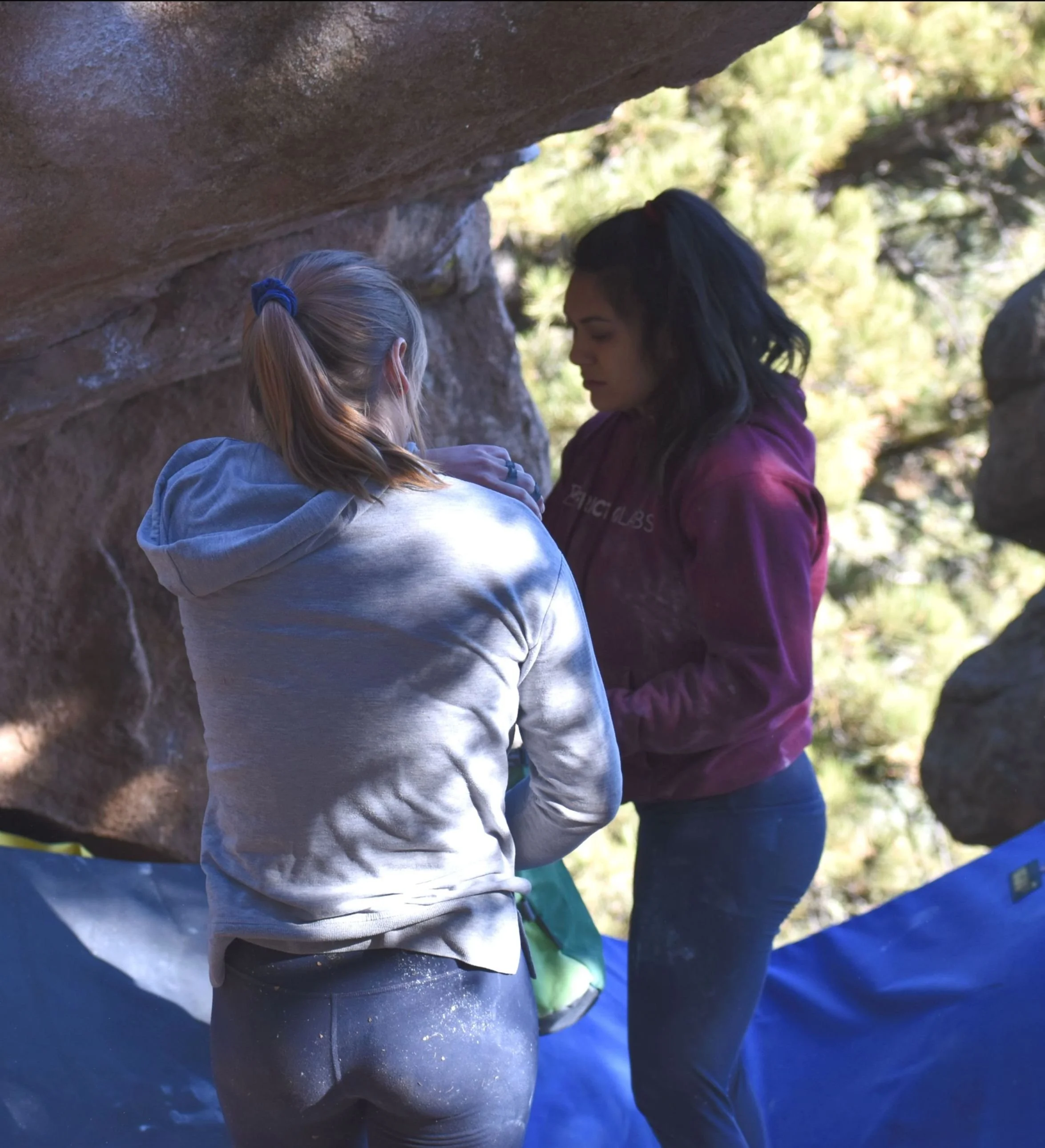what defines a peer (part 2)
Last week, I started a discussion on the Triple Crown Bouldering Series getting rid of gendered categories, receiving major pushback, then reverting to gendered categories.
I asked you all what you thought about non-gendered categories and also what constituted a peer.
By definition, peer means:
"a person who is the same age or has the same social position or the same abilities as other people in a group:" - Cambridge dictionary
"a person who is equal to another in abilities, qualifications, age, background, and social status." - dictionary.com
"one that is of equal standing with another" - Merriam-Webster dictionary
How do these definitions work in practice?
In an every day context, we typically can choose who we climb with - whether that's folks of a similar or differing height, body type, life experience, etc.
But in a competitive context, the two categorizations are currently gender and ability level.
Which brings us back to the original question at hand: should there be gendered categories? My current opinion is that, yes, right now there should be. Here are my main reasons:
-Even if all else was equal, women (and more broadly, non-cis men) are still in the minority in the climbing community. By sheer numbers, there is a greater likelihood we would see cis-men on the podiums, diluting representation.
-The climbs in all three boulder fields were established by a fairly homogenous population: cis- white men with similar anthropometrics. The competition point values of these climbs are determined by the same population. Therefore, people with similar anthropometrics to the first ascensionists and competition organizers are at an advantage. Generally, this means cis- men are at an advantage.
-Minority groups in the climbing community can have vastly different experiences in terms of access or lack thereof.
Now of course there are counterpoints to all of these. If we're talking about anthropometrics, what if there is a 5'11" woman competing against 5'3" women? A 5'4" man competing against 5'10" men? Do we further categorize by height? Weight?
For life experience, do we further categorize by income level? Race? More age categories? More genders?
Do more categories create equity or further division? Do fewer categories create inclusivity or erase representation?
In both pathways there are good intentions, but what is the actual impact?
I don't have all of the answers, other than that the impact of unisex categories was made abundantly clear: women felt discouraged from participating at all.
This is an important discussion that we as a community need to continue. As the climbing community is diversifying, we also need to draw from a multitude of perspectives to come to a consensus.

